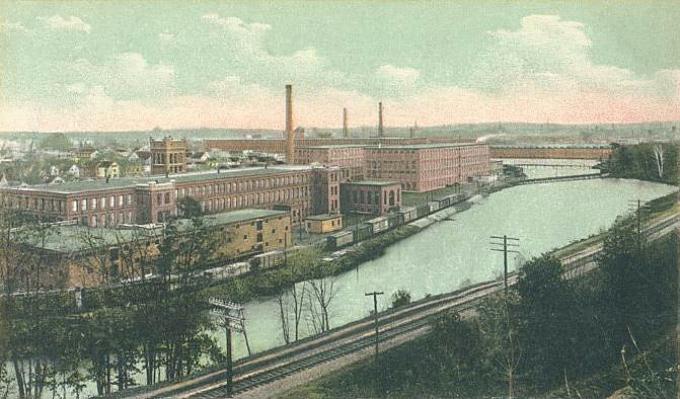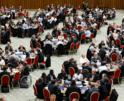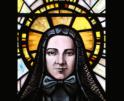
Culture
The public expressed little sympathy for the strikers; neither was there any for the mill owners.

Lester
In early 1919, Father Patrick J. Waters, professor of Dogmatic Theology at St. John Seminary, traveled to Lawrence at the request of Cardinal William H. O'Connell, Archbishop of Boston, to investigate an ongoing labor dispute between textile mill workers and owners. His written report was submitted on April 12, 1919, and resides within the records of St. John Seminary held by the archive.
The events that took place in Lawrence and Father Waters' report will be presented in two parts. This week's column will focus on the cause of the strike, and positions of the public, mill owners, and church in that city. The next installment will discuss Father Waters' general observations, his opinion on how the situation can be resolved, and a final analysis.
Background
The City of Lawrence was no stranger to labor unrest. The "Bread and Roses" strike preceded the strike of 1919 by less than a decade, spanning Jan. 11 to March 14, 1912.
In 1912, the strike resulted from a reduction in the standard workweek from 56 to 54 hours for women and children in Massachusetts, prompting mill owners to reduce wages proportionately. Many workers were already making less than a livable wage, unable to afford adequate housing and food for their families, and consequently, infant mortality increased while life expectancy among mill workers decreased.
The strike ended with the mill owners making concessions, including a 15 percent pay increase, overtime pay and no retribution against those who participated in the strike.
The 1919 Strike
According to Father Waters' report, the cause of the strike in 1919 was like that of seven years earlier. The United Textile Workers of America wanted the workweek reduced from 54 to 48 hours, so the American Federation of Labor (AFL) ordered the president of the Lawrence Central Labor Union (LCLU) to organize the mill workers.
The LCLU selected mill worker Ime Kaplan "to organize the foreign speaking mill workers" and specifically instructed him not to enter wage negotiations. Mill owners consented to the reduction in hours but, as in 1912, said they would adjust pay accordingly. Father Waters' report indicates that while "the English speaking operatives" were satisfied to be paid only for the hours worked, "the foreign speaking workers" were urged by Kaplan and others to strike until they received the same wages for 48 hours as they had for 54.
The AFL advocated for a return to work, the post-WWI environment was not ideal for a strike as returning servicemen meant a surplus of laborers, and labor organizations had been heavily taxed and were not in a financial position to support the strikers. Despite this, the promise of local support convinced an estimated 12,000 to 15,000 workers to strike starting Feb. 3.
The strikers
Father Waters reported that the majority of strikers were Italians, but also included many Lithuanians, Poles, Syrians and Belgians; very few "English speaking" workers were believed to be involved. By the time Father Waters arrived to investigate, he believed the strikers numbered about 6,000, roughly half as many than at the start.
Father Waters and his contemporaries feared external influences upon the strikers who are referred to as radicals, Socialists, anarchists, and other such terms interchangeably. For instance, the report claims that the leaders of the strike were originally Lawrence men, "radicals and active Socialists" unconnected with the mills, later replaced by "professional agitators" who arrived from Boston, New York, and elsewhere. They preach discontent, violence and anarchy, he continues, and further characterizes them as "extreme radicals and advocates of violence" who advise the use of guns, stoning the police and destruction of property. "They declare that their aim is to educate the workers in Socialism," take over industries, overturn the government, "and to make good Bolsheviki of all the workers."
He uses words like "simple-minded," "illiterate" and "emotional" to describe the workers -- traits, he says, that make them easily influenced by their leaders, and believes many of them wish to return to work but are threatened with violence if they do.
Public reaction
According to Father Waters, the public held a similar view. He writes that "in 1912 the people of the city were with the strikers, because the wages in the mills were very low. Today the people of the city do not wish to have the strikers victorious, for they consider that the labour (sic.) trouble is created not for the benefit of the workers but for the advancement of radical principles." He finds that many are of the opinion the workers would achieve their aims if they first returned to work, then chose new, local, leaders who would peacefully advocate for better wages.
The public expressed little sympathy for the strikers; neither was there any for the mill owners. Their desire for cheap labor attracted many immigrants, too many in such a short space of time, many believed, to help assimilate or maintain a decent living condition. Furthermore, the public believed the mill owners should be part of the community, live in the city where their mills are located, bear witness and speak with their workers about their troubles, and spend some of their large profits educating, providing recreation, and offering others services to the workers.
Mill owners' stance
The Bread and Roses strike in 1912 was still fresh in the minds of mill owners who claimed that in the intervening years workers had been "most independent, bold, and offensive." They admitted that in 1912 wages were low, but during WWI they increased wages voluntarily, and were now the highest in the United States among textile workers. In other cities, such as Lowell, Manchester, Fall River and New Bedford, the new 48-hour workweek with a proportionate reduction in hourly pay was accepted without discontent.
In taking a stand, the mill owners claim, they are not only protecting themselves, but mill owners everywhere. They blame the unrest on the "irresponsible I.W.W., Bolsheviki parasites, radical plotters and propagandists" whom they believe are the laborers' enemies by causing so much unrest.
Father Waters reiterates that the political ties of the strike leaders caused the public to turn against them, and the mill owners have embraced this outcry against Bolshevism and Anarchy to cover any injustices for which they are responsible.
Church in Lawrence
Finally, part of the report focuses on the Catholic Church in Lawrence, particularly the national churches which served the Italian, Lithuanian and other immigrant communities.
The Catholic clergy in Lawrence did not support the strike. Though they wanted the workers to have the highest wages possible, they too believed the strike was intended to spread "anarchy and Socialism," disapproved of the character and methods of strike leaders and advocated for a return to work.
This lack of support caused the strikers to denounce the priests and send them threatening letters, believing they had an influence upon the mill owners that could help their cause, but chose not to do so. Father Waters specifically mentions Father Mariano Milanese, OSA, pastor of Holy Rosary as a target. The strikers accused him of having been "bought up by the mill men or capitalists" who provided the $50,000 to build a parish school, which would be completed later in the year.
- Father Thomas Ryan, CSP, directs the Paulist North American Office for Ecumenical and Interfaith Relations in Boston.
Recent articles in the Culture & Events section
-
Scripture Reflection for April 14, 2024, Third Sunday of EasterDeacon Greg Kandra
-
St. Helena's House is established in the South EndThomas Lester
-
Is this synodality?Russell Shaw
-
Poking the hornet's nest of IVFFather Tadeusz Pacholczyk
-
A eucharistic word: MissionMichael R. Heinlein


















